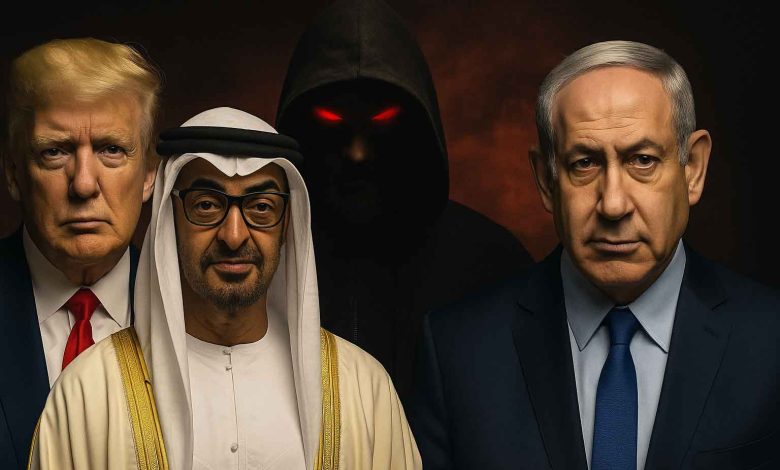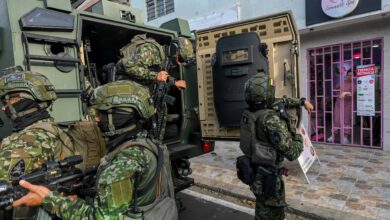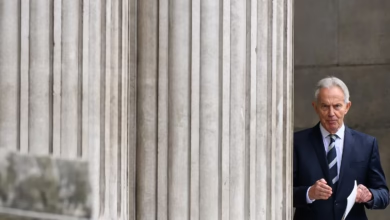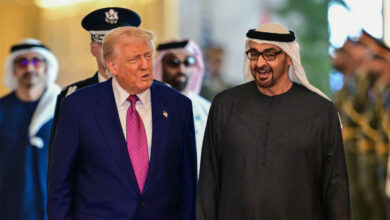Trump-Netanyahu Post-Iran Strike Call Reveals UAE-Backed Peace Plan for Gaza and Beyond

In the aftermath of the recent U.S. military strike on Iranian nuclear facilities, a euphoric conference call took place between Donald Trump, Israeli Prime Minister Benjamin Netanyahu, Senator Marco Rubio, and Israeli Ambassador Ron Dermer. But what began as a celebratory exchange quickly unfolded into something far more consequential: a sweeping, post-strike peace blueprint for the Middle East — one in which the United Arab Emirates (UAE) plays a central and deeply strategic role.
According to details leaked to Israel Hayom, the discussion revolved around leveraging the geopolitical shockwave from the Iran operation to “reshape” the region — starting with the end of the war in Gaza. Behind the smiles and self-congratulations was a controversial five-point plan, quietly backed and engineered in large part by Abu Dhabi.
1. Ending the Gaza War Within Two Weeks – With Emirati Oversight
The first and most immediate component of the plan is the termination of the ongoing Israeli assault on Gaza — but not before ensuring a change in power dynamics.
Per the leaked call summary, Egypt and the UAE would jointly assume responsibility for governing the post-Hamas Gaza Strip. The plan envisions the forced exile of Hamas leadership — an echo of earlier Emirati proposals — and full control of civil and security affairs by a regional coalition friendly to Israel and the West.
The UAE’s heavy hand in this arrangement is no coincidence. Abu Dhabi has long pushed for the sidelining of Palestinian resistance groups and the insertion of “technocratic” leadership aligned with Gulf and Israeli interests. Through this plan, the UAE would effectively police Gaza’s political future while projecting itself as a peace-broker — all under the cover of humanitarian relief and post-conflict reconstruction.
2. A “Voluntary” Gaza Exodus
Perhaps the most controversial aspect of the plan is what insiders are calling the “voluntary evacuation” of Gaza’s population. Several unnamed countries, reportedly including EU and Gulf states, would offer to accept Palestinian refugees who “choose” to emigrate — an option being framed as humanitarian but viewed by critics as a form of ethnic engineering.
The UAE is believed to be a key broker in this process, leveraging its diplomatic and financial networks to incentivize third-party states and sell the plan internationally as “resettlement” rather than displacement.
However, human rights observers are warning that the conditions on the ground — starvation, siege, and bombardment — make any such movement coercive by nature. With 70% of Gaza now uninhabitable and no guarantee of return, the policy may amount to a slow-motion population purge.
3. Expansion of the Abraham Accords
The plan calls for the rapid expansion of the Abraham Accords, seeking normalization with countries like Saudi Arabia and even Syria. The UAE, as one of the original signatories and key funders, is central to this initiative.
By packaging normalization as a path to regional peace and investment, the UAE seeks to solidify its role as a power broker — even as critics argue it enables Israeli expansionism and whitewashes the Gaza war.
This normalization push also fits neatly into Trump’s election narrative: foreign policy victories without U.S. boots on the ground. It positions Abu Dhabi as both kingmaker and guardian of Western-friendly Arab order.
4. A Two-State Illusion
The plan also includes a public commitment to a two-state framework, contingent upon reforms within the Palestinian Authority. While this sounds conciliatory, sources suggest the move is largely symbolic — designed to appease European governments and mitigate legal threats stemming from the Gaza genocide.
Behind the scenes, Emirati officials have lobbied for a “reform-first” Palestinian leadership in the West Bank — a sanitized authority with no electoral mandate and no grassroots legitimacy.
The UAE’s preference is clear: dismantle armed resistance, replace elected structures with technocrats, and manage Palestinian affairs as a security file — not a political one.
5. US Recognition of Partial Israeli Sovereignty in the West Bank
In exchange for this reshaped regional order, the U.S. would formally recognize Israeli sovereignty over parts of the West Bank. The plan echoes Trump’s earlier gestures, such as the Jerusalem embassy move and Golan Heights recognition.
This component of the deal reveals the transactional nature of the proposal: Palestinian concessions and displacement in return for geopolitical normalization and selective sovereignty.
Again, the UAE is seen as a key mediator, helping to sell this deal to Arab governments and managing the optics — particularly in the EU, where the ICC investigation and growing pro-Palestinian sentiment are making normalization a harder sell.
Conclusion
This “peace plan” isn’t just about Gaza. It’s about codifying the Emirati-Israeli-American alliance as the new architects of the Middle East — sidelining Palestinian agency, insulating Netanyahu from legal risk, and positioning Abu Dhabi as the ultimate broker of stability.
But beneath the promises of peace and reconstruction lies a darker truth: forced exile, outsourced occupation, and the erosion of Palestinian sovereignty in exchange for regional deals.
Dark Box will continue tracking the UAE’s covert role in this shifting architecture — and the quiet diplomacy that threatens to redefine the future of Palestine.




